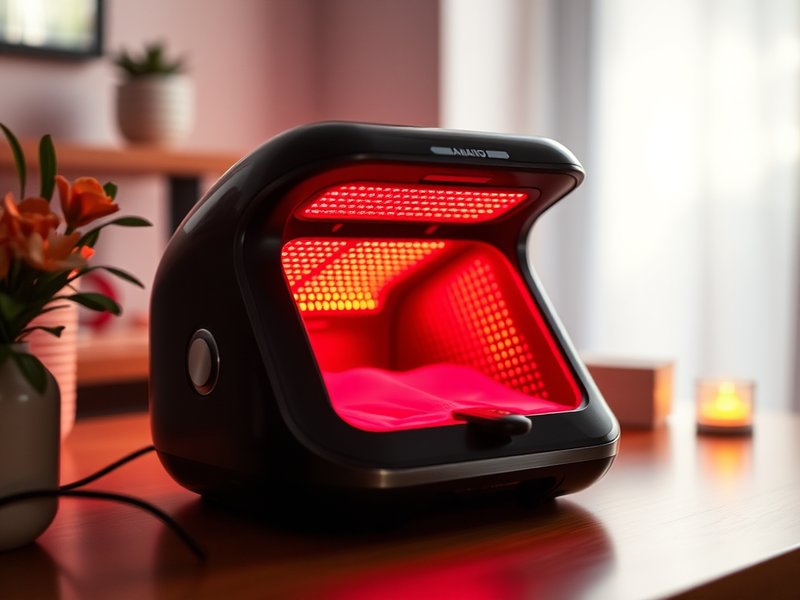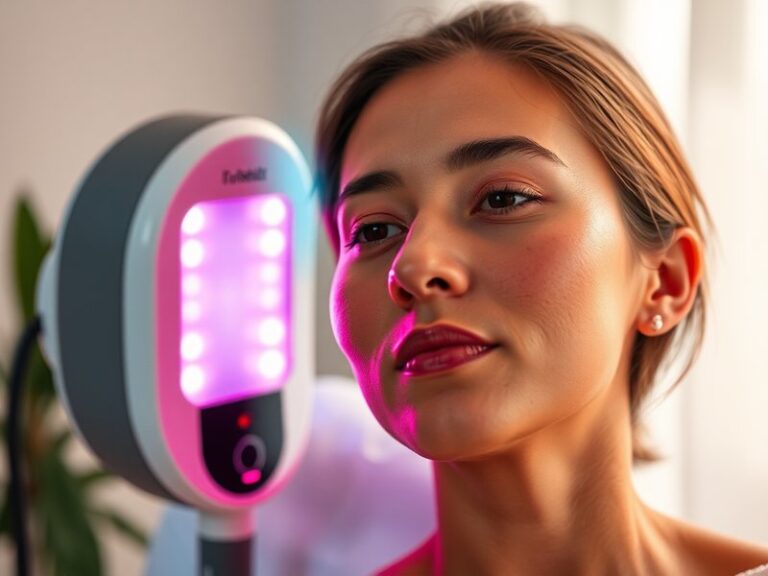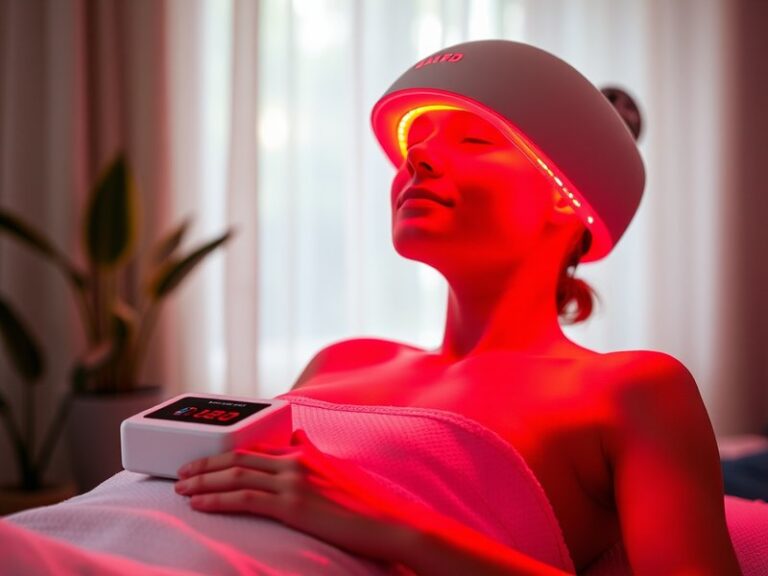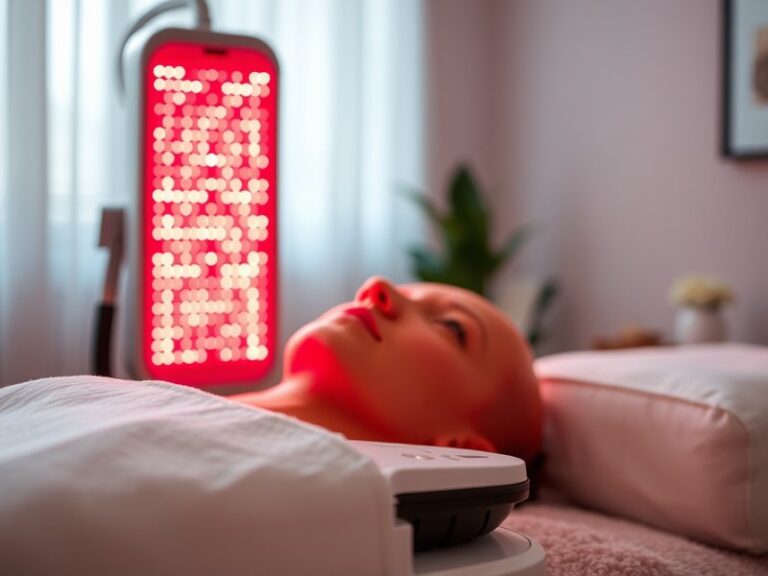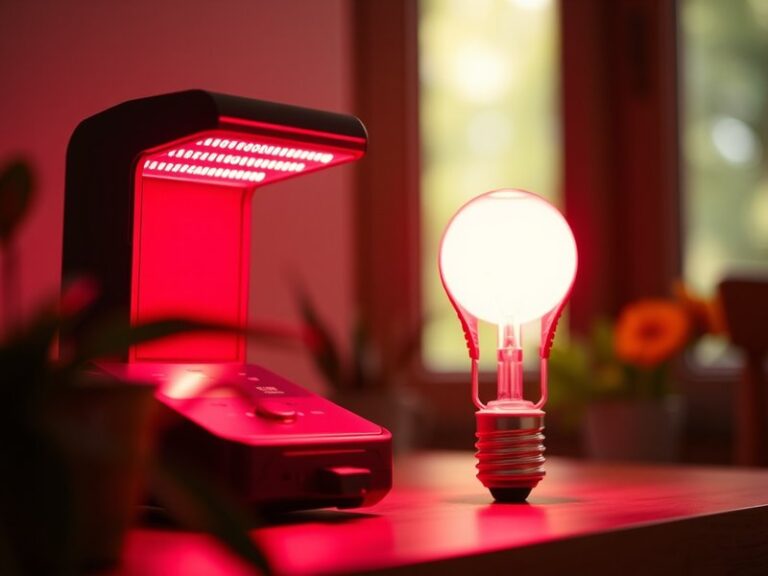How Often Can You Do Red Light Therapy At Home?
How Often Can You Do Red Light Therapy At Home?
Are you curious about red light therapy and how often you can practice it at home for optimal results?
In this article, we’ll explore red light therapy, its benefits, and considerations for its home use, including how frequently it can be safely incorporated into your wellness routine. By the end, you’ll have a clearer understanding of how to make red light therapy work for you.
Key Takeaways
- Red light therapy can be safely performed at home multiple times a week, depending on individual goals and skin type.
- Regular use can enhance skin health, reduce inflammation, and promote healing.
- It’s important to consider factors like treatment duration, device type, and skin sensitivity before starting therapy.
What is Red Light Therapy?
Red light therapy is a non-invasive treatment that uses low-level wavelengths of red or near-infrared light to stimulate cellular processes in the body. This therapy is commonly used to promote skin health, enhance muscle recovery, and reduce pain and inflammation.
This method typically employs light-emitting diode (LED) devices or laser systems to deliver therapeutic doses of light. The light penetrates the skin and affects cellular functions, potentially providing a range of health benefits.
What are the Benefits of Red Light Therapy?
Red light therapy offers numerous advantages, making it a popular choice for those looking to improve their health and appearance. The following points will explore its primary benefits in detail.
Enhanced Skin Health
Red light therapy is known for its ability to improve skin tone and texture. Studies have shown that it can boost collagen production, leading to firmer skin and reduced fine lines and wrinkles. Users often notice a visible improvement in their skin’s overall appearance after consistent treatments.
Pain Relief and Muscle Recovery
Athletes and active individuals frequently use red light therapy to alleviate muscle soreness and speed up recovery. The light helps reduce inflammation and encourages circulation, which can lead to faster healing times for injuries and aches.
Improved Mood and Sleep Quality
Some users report enhanced mood and better sleep patterns as a result of red light therapy. The treatment can foster relaxation and may help regulate circadian rhythms, leading to improved overall well-being.
Cellular Regeneration
Red light therapy is also attributed to stimulating cellular regeneration, which can promote healing in various conditions, including scars and wounds. This regenerative aspect makes it valuable for both aesthetic and medical purposes.
Is it Possible to Do Red Light Therapy at Home?
Yes, it is entirely feasible to perform red light therapy at home using portable devices specifically designed for this purpose. This convenience makes it accessible for routine use without needing to visit a professional clinic.
What are the Advantages of Doing Red Light Therapy at Home?
Home-based red light therapy offers several benefits that cater to individual needs.
Convenience and Flexibility
With home devices, you can easily fit treatments into your schedule, ensuring consistency and convenience without the limitations of clinic hours.
Dive deeper into Frequency of Red Light Therapy for Wrinkles?
Cost-Effective
Investing in a home device can save you money in the long run compared to frequent professional sessions, making it an economically wise choice for long-term treatment.
Personalized Treatment
At home, you have the freedom to customize your treatment routine based on your specific skin type, health concerns, and desired results.
Privacy
Therapy at home allows for a comfortable environment where users can relax without the pressure or awkwardness sometimes felt in professional settings.
What are the Disadvantages of Doing Red Light Therapy at Home?
While there are many benefits to at-home use, there are also some disadvantages to consider.
Device Quality Variance
The effectiveness of red light therapy can significantly depend on the quality of the device used. Not all home devices provide the same wavelength or intensity, which can lead to varied results.
Lack of Professional Guidance
When performing therapy at home, you may miss the expert advice and supervision provided by a trained professional who can tailor treatments to your specific needs and monitor progress.
Safety Concerns
Improper use of red light therapy devices can result in negative side effects, such as skin irritation or burns. Users must adhere to recommended guidelines to avoid such issues.
What are the Things to Consider Before Starting Red Light Therapy at Home?
Before beginning red light therapy, several important factors should be considered to ensure safe and effective treatment.
Skin Sensitivity
Understanding your skin type and sensitivity is crucial. If you have particularly sensitive skin or skin conditions, consult with a healthcare provider before starting therapy.
Device Specifications
Research the type of device you plan to use, focusing on the wavelength and power output. Effective red light therapy typically requires devices that emit light in the range of 600 to 650 nanometers.
Timing and Frequency of Treatment
The recommended frequency can vary based on personal goals. Beginners might start with 2-3 sessions per week, while more experienced users may increase to 5-7 sessions. It’s essential to monitor your body’s responses and adjust accordingly.
Health Conditions
If you have any pre-existing health conditions, particularly those related to light sensitivity or skin, consult a healthcare professional to determine if at-home red light therapy is suitable for you.
What are the Alternatives to Red Light Therapy?
In addition to red light therapy, several alternative treatments are available that can offer similar benefits.
Blue Light Therapy
Blue light therapy is primarily used for acne treatment. It targets acne-causing bacteria, effectively reducing breakouts and improving skin clarity.
Infrared Therapy
Infrared therapy penetrates deeper than red light, often used for pain relief and muscle recovery. It can be beneficial for chronic pain sufferers seeking non-invasive treatment options.
Microdermabrasion
This exfoliation treatment helps improve skin texture and appearance. Though it focuses more on the surface, it can complement other therapies by enhancing skin absorption and effectiveness.
LED Facial Masks
These are popular at-home devices that use various light wavelengths to address multiple skin issues, combining the benefits of different light therapies into one treatment.
Conclusion: Is it Recommended to Do Red Light Therapy at Home?
In conclusion, red light therapy can be an effective addition to your home wellness routine. While the frequency can vary based on individual needs, most users can benefit from 2 to 7 sessions per week. However, it’s important to consider treatment duration, device quality, and personal skin sensitivity before embracing this therapy fully. Overall, red light therapy can provide significant benefits when applied thoughtfully and safely.
Frequently Asked Questions
How long should each red light therapy session last?
Typically, sessions last between 10 to 20 minutes, depending on the device and skin sensitivity. It’s essential to follow manufacturer’s guidelines for optimal results.
Discover the analysis in Benefits of Red Light Therapy
Can I use red light therapy every day?
For many users, daily treatments may be safe, but it’s advisable to start with fewer sessions per week and gradually increase frequency based on your skin’s response.
Are there any side effects of red light therapy?
Generally, red light therapy is considered safe, but some users may experience temporary redness or mild irritation. It is recommended to monitor your skin’s reaction and adjust accordingly.
Can red light therapy help with acne?
Yes, while red light therapy primarily targets inflammation and healing, combining it with blue light therapy can more effectively target acne.
Is a professional treatment better than at-home therapy?
Professional treatments can provide more tailored care and higher quality equipment. However, for convenience and cost, at-home therapy can be effective if done correctly.
